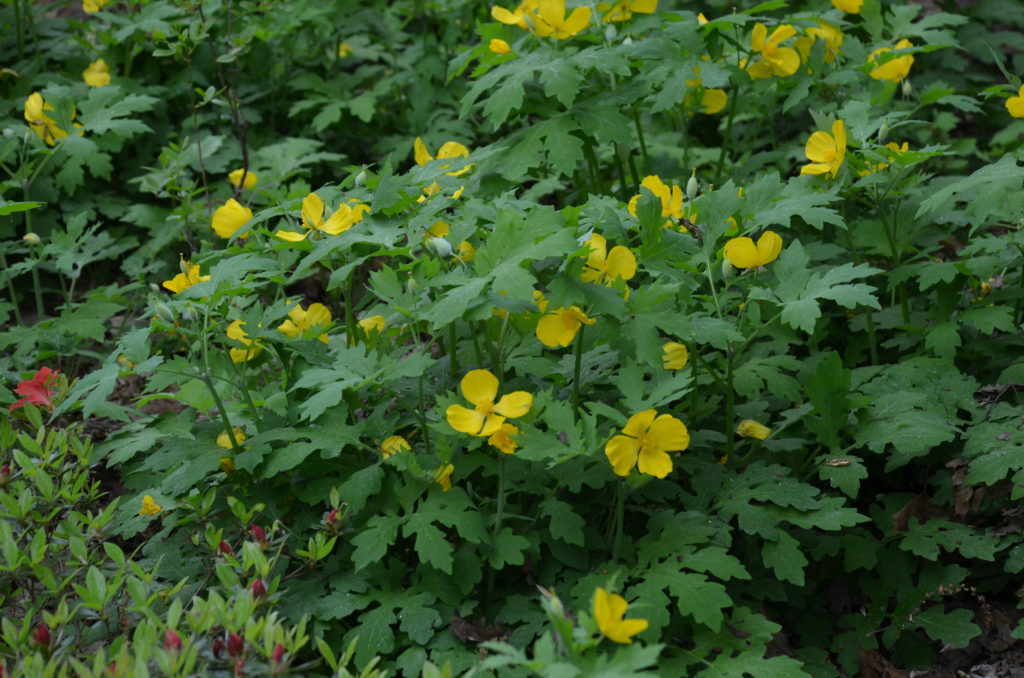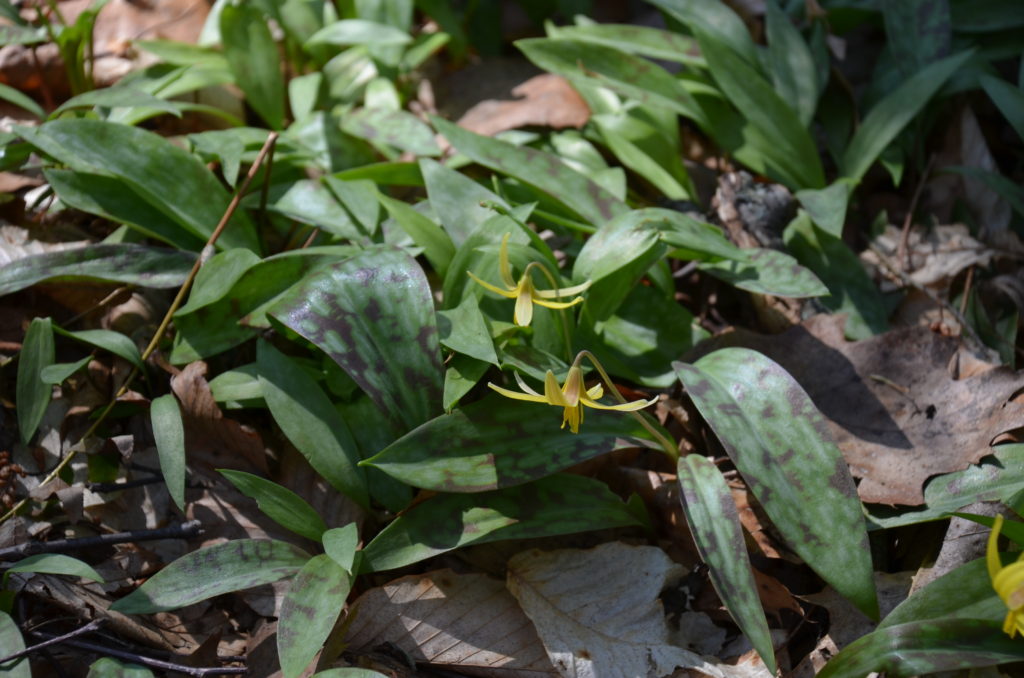
Celandine poppy (Stylophorum diphyllum) is a popular Eastern U.S. native loved for its 12-18 inch tall 4-petaled, yellow flowers. Its blue-green, pinnately lobed leaves are silvery on the underside. It seeds-in readily, which is a good thing, as plants disappear by late May and comeback early next spring in abundance (USDA hardiness zones 4-9).
Virginia bluebells (Mertensia virginica) is a native clump-forming perennial wildflower that grows 1-2 feet tall and produces lovely terminal clusters of 1 inch long, trumpet-shaped, sky blue flowers. The oval bluish green leaves foliage is also attractive (zones 3-8).
Trout lily (Erythronium americanum) is recognized for its thick, fleshy, mottled, brown and purple basal leaves that mimic brook trout. Solitary, bell- or lily-shaped yellow nodding flowers are perched above the foliage. Plants typically grow 4-6 inches high (zones 3-8).
Bloodroot (Sanguinea canadensis) produces showy 1.5 to 2 inch wide, 8-10 petaled white flowers that arises through palmate, deeply-scalloped, grayish-green, basal leaves. Each flower lasts only 1–2 days with lots more of new ones coming on. Flowers open up in mid-morning sun and close at night. Following spring flowering, leaves remain and widen to 9 inches across until mid to late summer when they go dormant. (zones 3-8)
Twinleaf (Jeffersonia diphylla) is a clump-forming plant that typically blooms on 8 inches high leafless (naked) stalks. The stalks develop leaves and grow to 18 inches in height by the time the fruit ripens. The long-stemmed, blue-green basal leaves (to 6 inches long) are divided into two lobes, mimicking two separate leaves, hence the common name. White cup-shaped flowers (1 inch diameter) bloom singly atop rigid leafless 8 inch tall stalks. Each flower contains eight petals (USDA hardiness zones 5-7).
The last of the six spring wildflowers to bloom is Shooting star (Dodecatheon meadia). From each basal rosette of lance-shaped leaves emerge 1-4 sturdy, leafless, center flower scapes, rising to 20 inches height. Atop each scape is a flower (umbel) containing 8-20, nodding, 1 inch long flowers. Each flower has five petals that are swept-back (reflexed) with a cluster of yellow stamens, giving the flower the appearance of a shooting star plummeting to earth. Flower colors range from white to pink to light purple (zones 4-8).
These spring wildflowers inhabit rich moist woodlands soils in partial to full shade. All are associated with limestone soils. Under ideal site conditions, they often colonize or naturalize by self-seeding. Bumble bees are often seen pollinating these spring ephemerals. Bees gather the nectar and pollen produced by these and other wildflowers when early-spring food sources are scarce.

Trout lily (Erythronium americanum)

 Posted in
Posted in 
